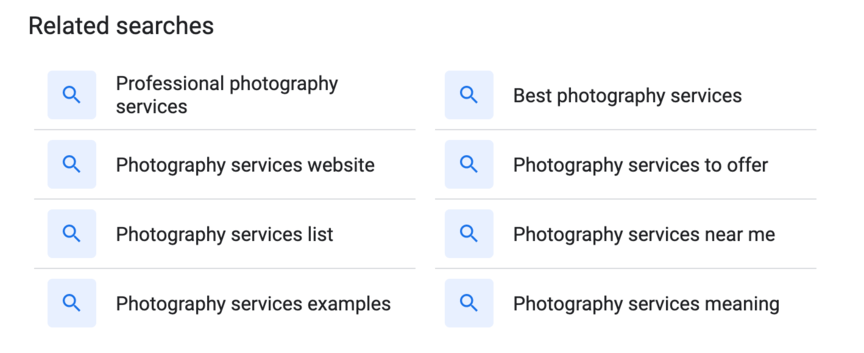-
 8 min. read
8 min. read
-
 Matthew Gibbons
Matthew Gibbons Senior Data & Tech Writer
Senior Data & Tech Writer
- Matthew is a marketing expert focusing on the SEO & martech spaces. He has written over 500 marketing guides and video scripts for the WebFX YouTube channel. When he’s not striving to put out some fresh blog posts and articles, he’s usually fueling his Tolkien obsession or working on miscellaneous creative projects.
Navigating the intricacies of search engine optimization (SEO) can be tricky. SEO depends on harnessing Google’s search algorithms to get your content ranking, and those algorithms aren’t always the easiest thing to figure out. Sometimes you just want a straightforward list telling you what you should and shouldn’t do for your SEO.
Luckily for you, we’ve put together that very thing. Below are 10 simple do’s and don’ts for SEO — five do’s and five don’ts. If you put these into practice, you’ll create a successful SEO campaign for your business.
Read on to learn more, and then check out WebFX’s SEO checker to see where your SEO currently stands in relation to this list!
Do’s for SEO
To start off our list of SEO do’s and don’ts, what should you do to earn a spot in search engine results? Here are five do’s for SEO to boost your Google rankings as an SMB!
1. DO use long-tail keywords
Keywords are essential to good SEO. When you include specific keywords in your web content, you aim to get your content ranking for those keywords. When you target keywords, they should meet two specific criteria: High relevance and low competition.
These types of keywords are known as long-tail keywords Long-tail keywords’ contain more words, which gives them more specificity. As a result, these keywords have a clearer search intent and also come with less competition. So, instead of targeting a keyword like “microphone,” try something like “what kind of microphone is best for music.”
2. DO use related keywords
You don’t just want to use longer keywords. You also want to use more keywords. When you write a piece of content, it should have a primary target keyword for which you’re trying to get it to rank.
But don’t stop there. If you can find some related keywords, you’ll want to try integrating them into your content as well. You can find related keywords using a few different methods.
If you’re looking for a quick and easy route, you can search for your primary keyword in Google, and then look at the related keywords at the bottom of the results. You can also use a keyword tool like KeywordsFX. 
3. DO create the best possible user experience
If your content is written using enormous blocks of homogenous text, it will look dense and intimidating, and therefore send negative signals to users. To increase your rankings, try to optimize the user experience for each page. One of the best ways to accomplish this is to break up content.
Use bulleted and numbered lists, as well as small paragraphs. Make use of plenty of headings and subheadings to divide things into sections. You can further improve the user experience by including images in between paragraphs and leaving plenty of white space around your text.
If you need help creating a positive user experience for your website, professional SEO services from an agency like WebFX can give your website and content a glow-up!
4. DO create title tags and meta descriptions
Title tags and meta descriptions are valuable elements of your web content.  Title tags are critical because they’re the main thing that will determine whether a user clicks on your content in the search results. You want to use titles that draw users in — including the target keyword is one way to do that.
Title tags are critical because they’re the main thing that will determine whether a user clicks on your content in the search results. You want to use titles that draw users in — including the target keyword is one way to do that.
Meta descriptions play a role in drawing users to click on your listing, while simultaneously informing search engines about the context of your page. Try to write meta descriptions that convey the context of your page in under 160 characters.
5. DO track site metrics
None of the other do’s and don’ts for SEO will be much use if you don’t verify that they’re working for you. Once you have everything else in place, keep up with site metrics that can help show you where to improve, like the following:
- Conversion rate
- Traffic flow
- Bounce rate
- Click-through rate
The easiest way to monitor your metrics is to use a tool like Google Analytics. When you set up Google Analytics for your site, it will provide you with access to a variety of metrics like the ones mentioned above.
Don’ts for SEO
Just as there are specific actions you should take, there are also things you’ll want to avoid in order to improve your search engine optimization. Here are five SEO don’ts to bear in mind as you launch your campaign.
1. DON’T ignore user search intent
As previously alluded to, you want your keywords to be relevant to your content. But what you don’t want to do is blindly churn out content without considering what users are hoping to find. User search intent describes what people want to find when they conduct searches.
If someone Googles “washing machine Baton Rouge,” they probably aren’t looking for an article about the history of the washing machine. Whenever you write a piece of content, make sure you’re writing it to fit user intent for your target keyword. Google is smart enough to tell if it is and will rank it accordingly.
If you’re not sure about user intent for a keyword, look at the content that’s already ranking.
2. DON’T keyword-stuff
You want to include keywords in your content at least a few times to boost your chances of ranking in Google. But don’t go too far with it. If you pack every paragraph with keyword after keyword, Google won’t respond kindly.
Keyword stuffing involves overuse of keywords to try and obtain higher rankings. This strategy is a black hat SEO strategy because it goes against Google’s guidelines — avoid using it. Integrate your keywords into your content organically if you want Google to rank your website.
3. DON’T allow for slow page speeds
Did you know that 83% of users expect website pages to load in three seconds or less? If any of your content pages take a long time to load, your visitors will quickly hit the back button. When a lot of people do that, Google will assume that your content isn’t relevant, and your page will go down in rankings.
To rank higher, then, you need to make sure that none of your pages take longer than three seconds to load — ideally, only one or two. Three seconds might not seem like long, but for page speed, it’s an eternity. Don’t make the mistake of letting page speed get slow on your website.
You can speed it up by doing things like:
- Caching your website pages
- Compressing your images
- Improving your server response time
- Minifying your code
- Limiting your redirects
4. DON’T use misleading linking methods
Using internal links on your website is a great way to keep people on your site longer. If they see a link to something that sounds interesting to them, they might follow it to another page on your site. But you must integrate these links naturally and honestly.
If you have a sentence that reads “We offer the best lawn-mowing services in Chattanooga,” and you want to link to your lawn-mowing service page, you should use “lawn-mowing services” as your anchor text. Using “Chattanooga” as anchor text would be misleading. You also don’t want to use too many keywords as your anchor text, since Google will penalize you in rankings for that.
Prioritize anchor text that makes sense over anchor text that uses keywords.
5. DON’T neglect responsive design
None of the other SEO don’ts on this list will help you rank if you only apply them to a desktop format. Given that 70% of all Internet time is spent on mobile, Google has started prioritizing mobile formats over desktop ones. In other words, a site that isn’t optimized for mobile won’t have any shot at ranking.
Your content needs to apply responsive design — that it, it needs to work equally well on both desktop and mobile devices — for it to appear in Google search results.
Get help implementing SEO do’s and don’ts from WebFX
Now that you know the basic do’s and don’ts for SEO, you can start implementing them into your digital marketing campaign. But what if you’re still not sure how to make the most of them? No worries — WebFX, the world’s best SEO company and the top Fort Myers SEO agency, has your back.
Our team of over 500 experts can help you optimize all the SEO do’s and steer your content clear of the SEO don’ts.
Plus, we have offices all around the globe! For example, we offer London SEO solutions, along with offering SEO services in Harrisburg, Fort Myers, Ann Arbor, New York City, and many more locations!
To get started with our SEO services, just call us at 888-601-5359 or contact us online today!
-
 Matthew is a marketing expert focusing on the SEO & martech spaces. He has written over 500 marketing guides and video scripts for the WebFX YouTube channel. When he’s not striving to put out some fresh blog posts and articles, he’s usually fueling his Tolkien obsession or working on miscellaneous creative projects.
Matthew is a marketing expert focusing on the SEO & martech spaces. He has written over 500 marketing guides and video scripts for the WebFX YouTube channel. When he’s not striving to put out some fresh blog posts and articles, he’s usually fueling his Tolkien obsession or working on miscellaneous creative projects. -

WebFX is a full-service marketing agency with 1,100+ client reviews and a 4.9-star rating on Clutch! Find out how our expert team and revenue-accelerating tech can drive results for you! Learn more
Try our free Marketing Calculator
Craft a tailored online marketing strategy! Utilize our free Internet marketing calculator for a custom plan based on your location, reach, timeframe, and budget.
Plan Your Marketing Budget

SEO Success with KOA

Proven Marketing Strategies
Try our free Marketing Calculator
Craft a tailored online marketing strategy! Utilize our free Internet marketing calculator for a custom plan based on your location, reach, timeframe, and budget.
Plan Your Marketing Budget
What to read next





